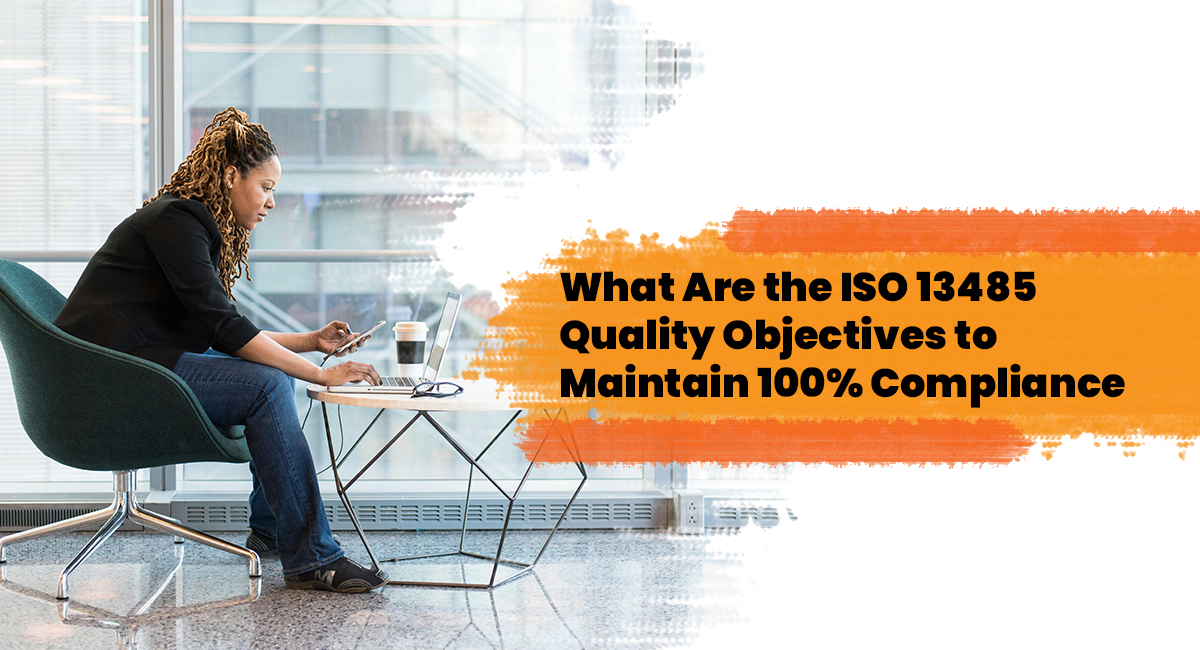
Determining success within the medical device field is related to the quality of your machines’ performance. In terms of quality, a reliability factor is to be taken into consideration as well. The ISO 13485 is a global term for quality assurance guidance and is curated precisely for this industry. This standard is known for referring to the best policies and guidelines for maintaining regulatory compliance. The ISO 13485 quality objectives are therefore categorically designed to ensure customer requirements are met and you maintain high satisfaction levels.
Quality objectives are designed based on a company’s present revenue percentage, customer engagement, brand value, and all aspect of market exposure. The ISO 13485 clauses allow companies to modify their system and design their list of quality objectives. The liberal angle of this standard helps to minimise resource waste while at the same time maintain regulatory compliance and organisational goals. The comprehensive nature of this international standard is supportive, and you can design tailored and customised choices according to your individual priorities. To set your objectives, it is necessary to know understand each one specifically. The following blog will discuss the best methods for designing your objectives. Before going further, the content covered will provide a few examples of quality objectives as well.
What are some of the examples of ISO 13485 quality objectives?
• Enhanced customer satisfaction by 55% by the end of the coming six months (short-term objective).
• A lowered resource waste at the end of two years amounting to a percentage of 70% (Short-term).
• Ensure compliance to all relevant regulatory requirements and standards, including the ISO 13485, FDA regulations, and other applicable international standards. (Long-term)
• Identify and mitigate risks associated with product development, manufacturing processes, and supply chain management to ensure product safety and efficacy. (Long-term)
• Provide adequate training and development opportunities for employees to enhance their skills and increase their ability to perform their roles effectively. (Long-term)
• Decrease the rate of supplying defective products to customers within the coming one year (short-term).
• Implement robust systems for product traceability throughout the entire product lifecycle, from design and manufacturing to distribution and post-market surveillance. (Long-term)
• Enforce preventive maintenance programs to ensure reliability and the longevity of manufacturing equipment and facilities. (Long-term)
How to set the ISO 13485 quality objectives?
Recognise stakeholder needs – The primary requirement of all major stakeholders is to be recognised for designing both short-term and long-term objectives.
Set SMART objectives – SMART refers to the following:
• Specific: Clearly define what needs to be accomplished and why it’s important.
• Measurable: Define quantifiable metrics or indicators to measure progress and success.
• Achievable: Ensure that objectives are realistic and attainable given the organisation’s resources and constraints.
• Relevant: Ensure that objectives are aligned to your organization’s quality policy, strategic goals, and regulatory requirements.
• Time-bound: Establish deadlines or timeframes for achieving each objective and provide a sense of urgency and accountability.
Communication and leadership – To enhance the proactive participation of each stakeholder, and your workforce, it is necessary to build a leadership team that will allocate resources and communicate plans accordingly. Without transparent communication, common goals can never be achieved. People will lack motivation, which will eventually affect the final result.
Monitor and Review Progress – Establish processes for monitoring and reviewing progress made towards achieving all quality objectives. Define key performance indicators and metrics to track performance, measure results, and identify areas for improvement. Conduct regular management reviews to assess the effectiveness of all quality objectives and make any necessary adjustments or improvements.
Documents – Document all established quality objectives, including each rationale, target, responsibilities, and action plans for achieving them. Ensure that quality objectives are documented within the organisation’s quality manual or documented information as is required by the ISO 13485. Keep records of performance data, audit findings, corrective actions, and other relevant information to demonstrate compliance to all of the ISO 13485 requirements.
To locate professional help and support in implementing an ISO quality management system standard and other internal audit requirement, contact us at Compliancehelp. We are a premier firm that can provide support for any ISO certification within Australia. Our customised solutions for ISO and other global certifications are ready to make this seemingly complicated accreditation process, comfortable and finish on-time. From basic consultation to audit and analysis, we will cover everything. Get help, support and answers to all your questions regarding the clauses of any management system standard you require.

Get connected with us on social networks!